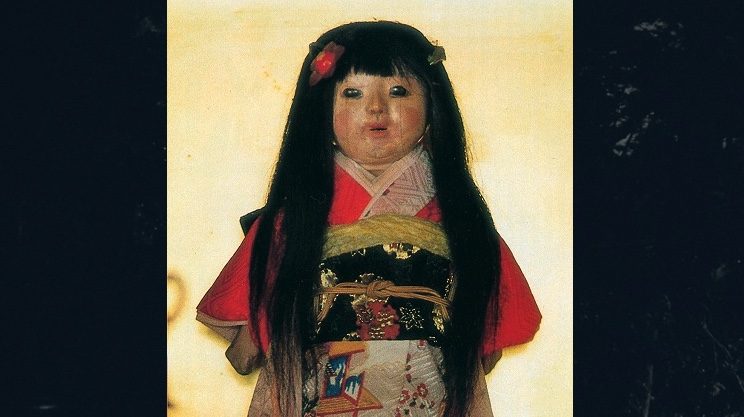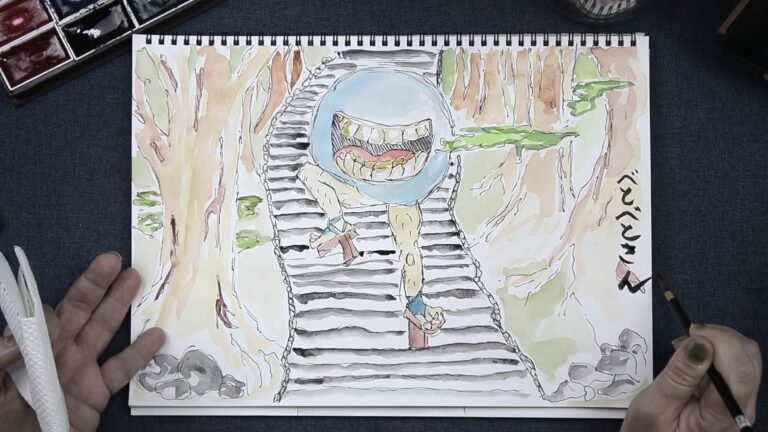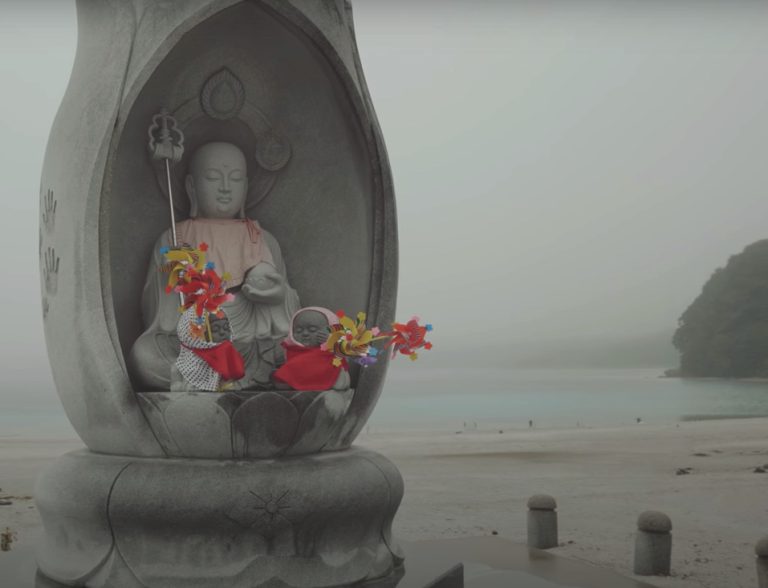I’m Thersa Matsuura. You’re listening to Uncanny Japan, and it’s almost Halloween.
While in Japan the spookiest time of year is summer, I can’t help extending the mood up until the end of October. It’s been some time since I’ve done anything creepy here, so let’s remedy that. Today let me tell you about tunnels, the haunted kind, and then in the next episode (that will fall on Halloween), I’ll tell you a chilling ghost story about a particular tunnel.
Today’s show will be a little scary. Nothing too gory or over the top, but I wanted to give a heads up in case you don’t like those kind of things. If you DO like those kind of things, though, go ahead and turn out the lights and close your eyes.
Japan and Haunted Tunnels: My Theory
I would hazard a guess that Japan has more haunted tunnels than any country in the world. I have zero evidence for this. It’s just a hunch based on a couple things. For one, glancing at a Japanese atlas, you learn the country is 73 to 75% mountainous. That means, in order to travel anywhere you need to have a lot of tunnels. And Japan certainly has a LOT of tunnels.
A second reason for my bold claim is that except for the more modern, brightly lit, clean, and somewhat roomy tunnels you can find in bigger cities or built to accommodate the Tomei Expressway, in my thirty plus years here, 90% or more are dreadfully old. Some tunnels even constructed over a hundred years ago and are still being used. All of them are narrower, darker, wetter, and much more unsettling than anything I’ve driven through in the States. I’m not complaining either. I quite enjoy turning on my headlights when I enter a sinister-looking stone cavity, walls darkened by moss and mold; water dripping from the ceiling making puddles on the uneven road or splashing on my windshield when I least expect it.
And my third reason I think most of Japan’s tunnels are haunted in some way or another is that I keep hearing over and over about different local tunnels that have some ghost story or urban legend attached to them. Like, almost all of them, actually. I know more haunted tunnels in my city than non haunted ones.
The Tragedy of the Nihonsaka Tunnel
And not just the really old, unused ones either. For example, there’s a much traveled tunnel near me called the Shin Nihonsaka Tunnel. Before it became “New” or “Shin” it was just the Nihonsaka Tunnel. It’s incredibly long, over 3 kilometers, or almost two miles. Yes, driving through that took a little getting used to. Anyway, I remember the day I was told it was haunted. It seems back in 1979 there was an accident that led to a pile up inside of 173 cars and trucks. This led to a fire that raged so hot the sprinkler system broke and it burned for for three days, making it the biggest tunnel fire in Japanese history. Miraculously, only 7 people perished in the accident. Yet, still that is seven precious lives lost. It’s said their restless spirits remain trapped inside that two-mile long, gloomy cavernous stretch of road. I was cautioned to always roll up my windows before entering the tunnel. Yes, that’s probably because of exhaust fumes. But if you listen to my mother-in-law, it’s so the ghosts do slip into your car and ride home with you. There are stories of them leaving hand sprints on your windows as you drive through.
So I kind of assume given their long histories, all tunnels in Japan are haunted to some degree or another.
Old Tunnels and Human Sacrifices
Remember I said a good number of them were built hundreds of years ago? Think about that. Without any modern equipment, digging through a mountain and trying to shore up the sides and ceiling before the whole thing collapsed on you. It wasn’t just physically brutal work and highly dangerous, but it also was almost guaranteed to anger the deities who lived on or in the mountain. Sure sacrifices were made to appease these aggrieved gods — I talk about those in the hitobashira — in effect human sacrifices — in episode 81 and 94, Human Pillars. But many deaths still occurred. And those restless spirits, evidently, still abound. Many battles were also fought around or even in tunnels. What a perfect place to ambush your enemy. More death. More agitated spirits.
Speaking of human pillars, I just read that Tokugawa Ieyasu called for hitobashira when building the Edo Castle. During the great Kanto Earthquake, part of the castle collapsed and the bones of sixteen people were recovered. All of them had coins on their heads. I just thought that was morbidly interesting.
Anyway, these older passageways were footpaths or defensive networks built around castles, meaning they were quite narrow, unlit, and damp. But there are also many that aren’t quite that old and are still used as single lane roads today. And of all of the hundreds most likely thousands of ghostly tunnels out there, some stand out as more haunted or cursed than others. Let’s talk about three of them.
Kiyotaki Tunnel in Kyoto
The first. Have you ever heard of the Kiyotaki Tunnel in Kyoto? It’s considered one of the most haunted in Japan. It runs between Arashi-yama and Sagaki-yotaki and was started in 1927 and finished in 1928. It’s still in use today to both pedestrians and vehicles, only it’s quite narrow and long and allows only one car to pass through at a time. When you approach it you’ll see a single light either red or green, indicating whether or not you can proceed.
Why, yes, there are rumors of times past when the light turned green and someone entered thinking it safe, only to be met by an oncoming car. You see, there are many spirits in and around the tunnel. They’re people who died while building it, or in accidents, or even those who took their own lives because the forest around the Kiyotaki Tunnel is known to be a suicide spot. It’s those ghosts who mess with the light, luring innocent victims inside and perhaps join them in death.
Other creepy occurrences are people feeling sick or nauseous while passing through. Some while deep inside the tunnel, hear voices, a woman shrieking, or feel the car rock as if hit by a sudden gust of wind. Some see a woman in white standing at the exit, others have reported seeing the woman running toward them after they’ve exited and jumping on their cars. Sometimes handprints have been found on the windows.
Another thing the Kiyotaki Tunnel doesn’t have going for it, is that while it’s estimated at being 500 meters long, legends says it’s actually 444 meters long. Four Four Four. Remember the word for four in Japanese is “shi” which by another character means death. So death death death.
Isegami Tunnel in Aichi
Next is Isegami Tunnel in Aichi Prefecture. There are actually two. One is very old, was closed for some time, then reopened in 1960. It’s still used, narrow but two lanes and has various stories surround it. A woman or sometimes it’s said two children died in or near the tunnel. Either they drowned due to a flash flood or were buried by a landslide during a typhoon. Either way, she can be seen wearing white, maybe getting a ride with a truck driver late one night, only to disappear upon exiting the tunnel. As for the children they’ve been seen as ghostly apparitions that rush at you suddenly when you see them. Or they’ll leave writing on your windows, as if drawn by their little greasy ghostie fingers.
The older Isegami Tunnel — originally opened in 1897 — though is farther up in the mountains, much narrower, surrounded by forest, and not really used anymore. So even now there are no lights in this one. It’s long and gets totally dark even in the middle of the day. Flashlights don’t make much of a dent in the pitch blackness either. It’s cold and windy and very damp with water dripping from the mossy stone walls and ceiling above and forming pools on the ground. This one shares the ghost stories of the first, the woman or children who died there. Some tales even going so far as to say the mother of the two children can sometimes be seen clinging to the walls of the tunnel as she searches for them.
Inunaki Tunnel in Fukuoka
The last tunnel we’ll cover today is Inunaki Tunnel, or Howling Dog Tunnel. It has both a survival game (called Inunaki Tunnel) based on it and a movie that came out in 2019 (called Howling Village) that is related to it. There are two Inunaki Tunnels, a newer one — not so haunted — and an old one —very haunted. They are located in Fukuoka.
Before we get to the tunnel, let’s talk about the village super quick. Although, there’s enough weird and mystery surrounding this Howling Dog Village to do a whole episode, if you’d like. But for now, there really was an Inunaki Mura or Howling Dog Village, although it’s real name was Inunaki Dani, Howling Dog Valley. It came about in 1691 when a bunch of samurai families moved in and the entire area was called Inunaki Yama or Howling Dog Mountain.
That village no longer exists. But there is one of urban legend and myth that is a brilliant piece of horror, surrounded in creepy myths and urban legends. Basically, the story goes if you ever come across this village you’ll find a sign posted that states the Japanese constitution does not apply beyond that point. Meaning, anything can happen. And it does. Evidently.
As for the tunnel, aside from the normal paranormal and spooky things that are said to happen there, one rumor is that as you drive up to it, your car will stall. Nothing you do gets the engine to turn over. There’s no one around and it’s a very long walk down the mountain. But, hey, you happen to notice a path through the woods. Surely following that will bring help. Alas, it only leads to that nightmare village.
A real horror also occurred back in 1988 when five youths who tried to steal a man’s car but didn’t succeed later captured the same man, brought him to the tunnel and burned him alive. Yes, they were caught and tried.
Now both ends of the tunnel are sealed off by large blocks. One side totally impenetrable, the other has some space at the very top that not very well-mannered people discovered. These days that barricade and the inside of the tunnel is covered in graffiti and garbage.
Liminal Spaces
And these are just three of the hundreds, dare I say thousands, of haunted tunnels all across Japan. There must be something more than past deaths and creepy atmosphere — the dark, damp, confined spaces — that spur the imagination, the rise of the supernatural, and that deep feeling of dread that overcomes us in certain situations.
And maybe there is. Tunnels are liminal spaces, in-between or transitional spaces. They are places where the usual rules are irrelevant. Where anything can happen. When you enter a tunnel you’re going from one place to another, from one state of being to another. There is the you before you enter, and then the you that comes out on the other side. Is the one that exits the same as the one that entered? What kinds of things can happen to change you while passing through that dark enclosed disquieted space?
Speaking of liminal spaces, I’m sure you won’t be surprised that spirits like to hang out in them. Especially, unsettled ones who have died a violent or sudden death usually at the hands of another. So they gather in the long shadows across the and they wait.
They wait for someone, like you, foolhardy enough to chase the thrill of doing something frightening, not once considering the danger of it. Not thinking about what became of others like your self, but who left warning stories through the years, what horrors did they really experience, what nightmares are they still living for having so casually and un-seriously encroached on this in-between space spirits wait and our normal rules of reality no longer apply.
Everyone stay safe, take care, I’ll talk to you in two weeks.






